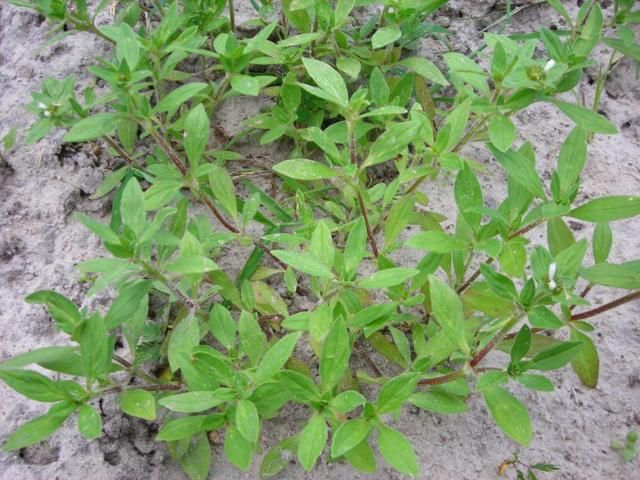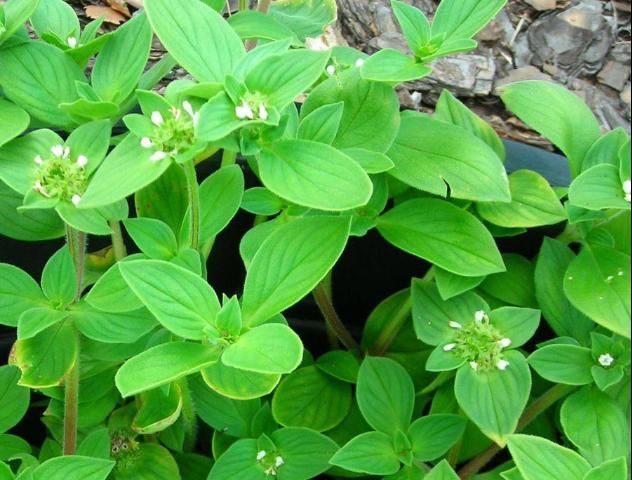Florida pusley (Richardia scabra L.) is a common and troublesome weed found in pastures, cultivated fields, waste areas, and roadsides throughout Florida. Plants grow prostrate (creeping along the ground) and have hairy stems that grow to lengths of up to 30 inches (Figures 1 and 2). Leaves are thick and fleshy and often have a rough upper and lower surface. Small white flowers that form a cluster at the ends of stems are characteristic of this weed (Figure 3).

Credit: Brandon Fast

Credit: Brandon Fast

Credit: Brandon Fast
Florida pusley grows low to the ground and rarely infests fields with good grass cover. However, Florida pusley can become a prevalent weed in open areas during grass establishment or in areas where grass has died. The dense, mat-like nature of this weed makes it difficult for desirable grasses to grow in its presence.
After Florida pusley has become well established, it can be difficult to control with common pasture herbicides, such as 2,4-D. Several new herbicides have recently been developed for pasture use, but their efficacy on Florida pusley is not known.
Research was conducted to determine the efficacy of several commonly used pasture herbicides on Florida pusley plants that were approximately four inches in size when herbicides were applied. Table 1 details Florida pusley control two, four, and eight weeks after treatment (WAT), as well as the approximate costs of treatments.
GrazonNext HL and GrazonNext HL used in combination with Pasturegard HL provided excellent Florida pusley control (90% or greater). It should be noted, however, that GrazonNext HL is a relatively slow-acting herbicide and often requires up to four weeks for significant weed control to occur. Control provided by Pasturegard HL was fair (84% at eight WAT) and Weedmaster (70% at eight WAT) was much lower.
As mentioned above, control of Florida pusley becomes more difficult as the plant matures. Therefore, if applications are to be made to plants larger than four inches, it is likely that Pasturegard HL and Weedmaster will not provide acceptable levels of control. For larger plants, GrazonNext HL used in combination with Pasturegard HL will most likely be necessary.